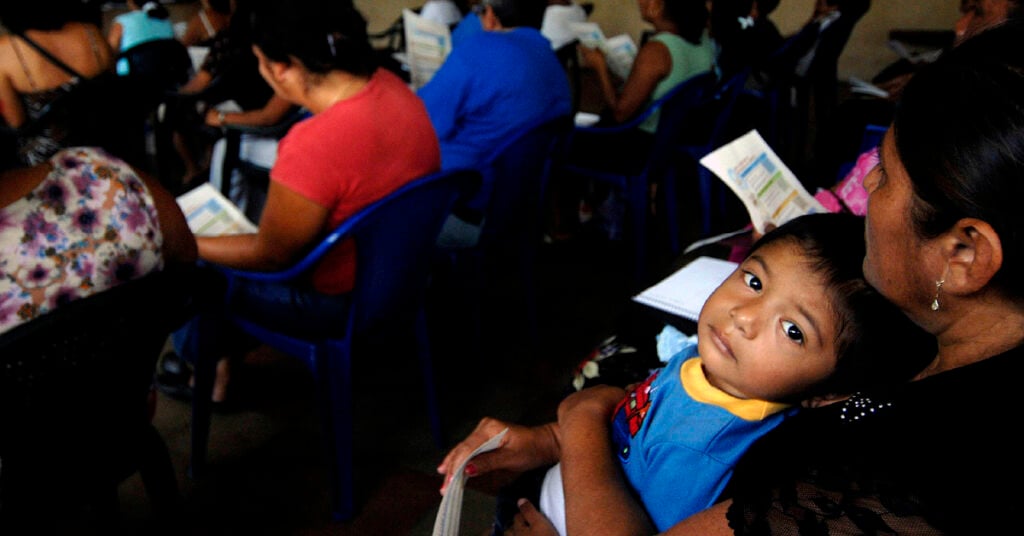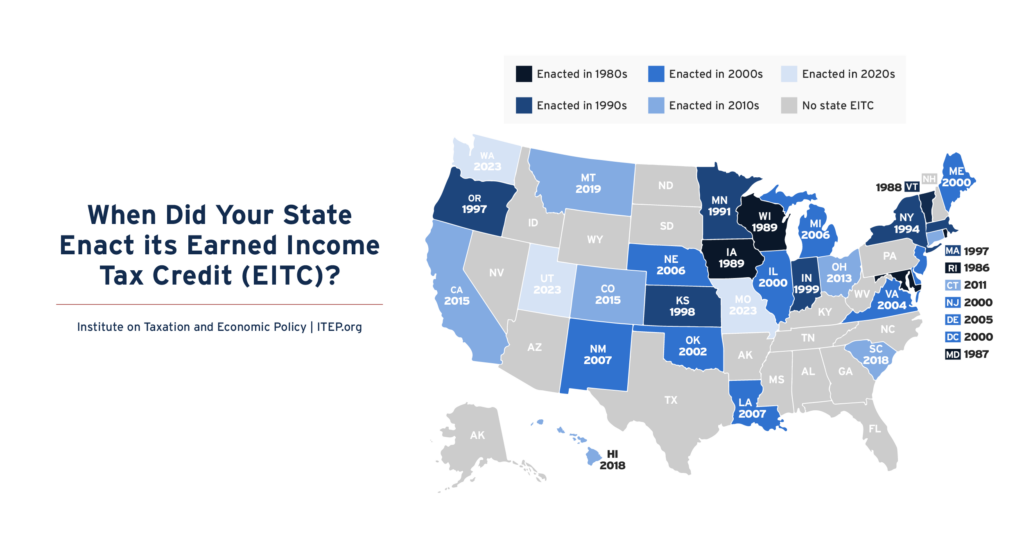Lawmakers have passed laws in more than 20 states that either immediately or soon will greatly restrict women’s rights to decide whether and when to have children. The Supreme Court is now permitting these restrictions to be imposed. The states that will soon force women to carry unwanted pregnancies to term have some of the worst tax, spending and labor market policies for families in the U.S.
None of the states forcing childbirth have refundable credits for children, which help families pay for a small share of the enormous costs of raising kids. Of the nine states that already had or just added refundable tax credits for children, all are pro-choice states. Existing state Child Tax Credits vary widely in credit size, income limits and eligibility, but it is notable that no anti-choice state provides one.
Just five of the abortion-restrictive states provide refundable Earned Income Tax Credits (EITCs) to assist low-income parents, something 23 pro-choice states now offer. Most of these credits piggy-back on the federal EITC which is the country’s main way of supporting low- and moderate-income families with kids. Some other states, including some of the abortion-restrictive states, offer a non-refundable EITC, which is helpful to moderate-income families but less helpful to the lowest-income families.
Most of the abortion-banning states rank in the bottom half on education funding per child. Seven of the 10 states spending the least on education in a 2020 assessment are among the states that will now compel children to be born, regardless of whether they have parents who can care for them. Nine of the 10 states spending in the top 10 on education are pro-choice states.
All but four of the states forcing childbirth also score in the bottom half in a comprehensive assessment of spending on poor children published by the American Association of Pediatrics that considers state spending on cash assistance, housing aid, EITC, childcare and medical assistance. The abortion-restrictive states comprise eight of the 10 stingiest among the rankings. All of the top 10 states for such spending are pro-choice states. The study found that states that spend more on these combined benefits had better outcomes for children as measured by substantiated cases of child abuse, rates of foster care placement, and childhood deaths due to abuse, all of which were higher in the low-spending states.
In addition to doing less through public spending to improve the lives of families with children, abortion-restrictive states do less through their labor laws to make it possible for working people to take care of children. None of the abortion-banning states require employers to provide paid family leave, something required in 11 pro-choice states (including D.C.). This means that after forcing someone to remain pregnant and have a baby, these states would not enable her to have any paid time off to recover from birth or care for her infant. Just two of the states banning abortion require employers to provide paid medical leave of any kind, compared to fifteen of the pro-choice states (including D.C.).
Abortion-restrictive states also do less to ensure that workers earn better wages. Fifteen of the 20 states whose minimum wage is at or below the federal level are on the abortion-restrictive list.
As a woman and a parent, I know that bodily autonomy and the right to decide whether and when to have children goes far beyond economics: no amount of money can justify forcing a woman to bear a child. But I also know that public policy can do a lot to help support the children who are already here.
The correlation is clear – the states that plan to force children to be born also do less to help them thrive once they are.




